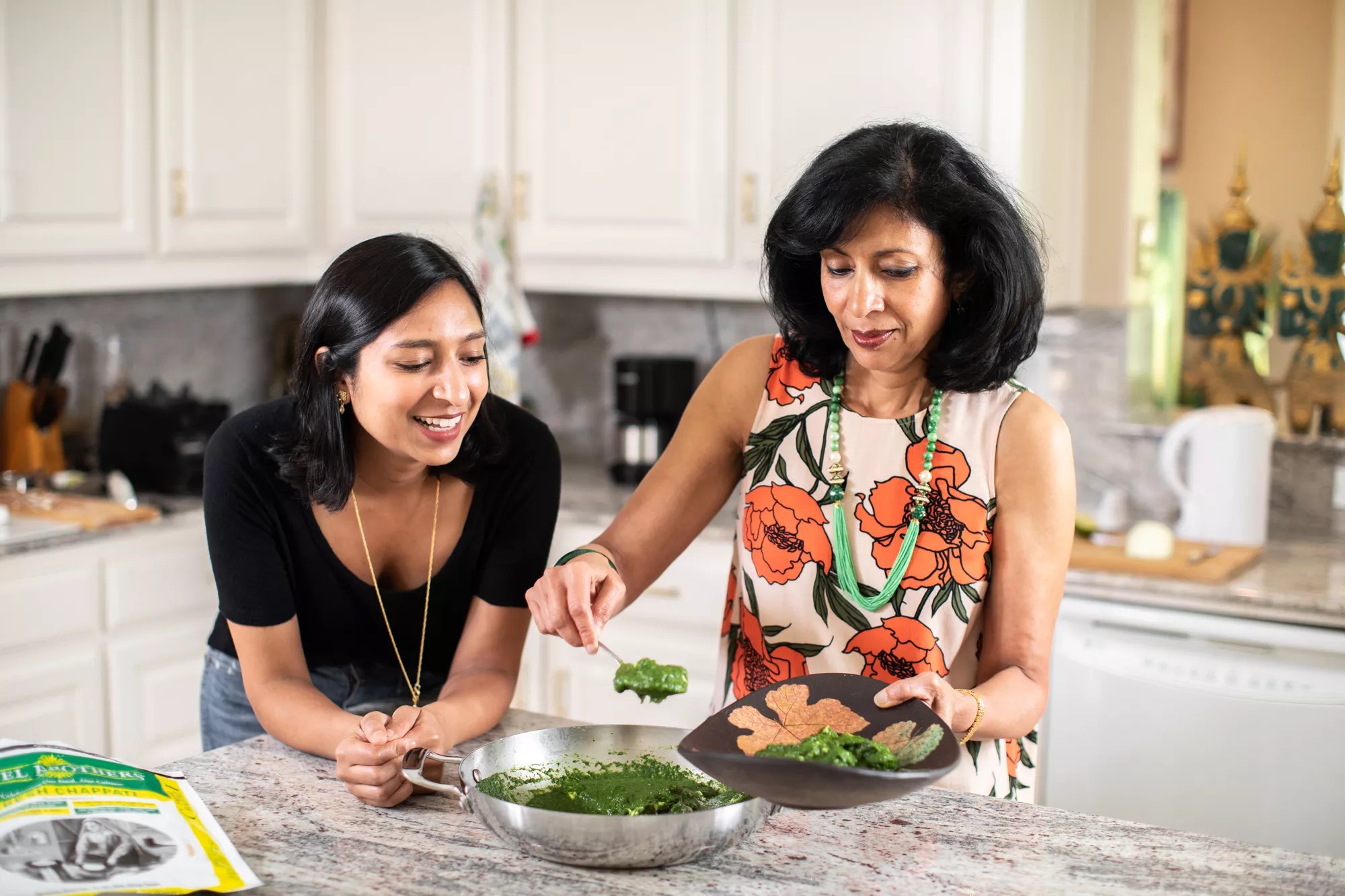
Kathy Tran

Audio By Carbonatix
It’s Friday night, and I’m standing over a hot stove watching whole coriander seeds and green cardamom seeds shim
mer in hot ghee, trying not to burn anything. I have been warned not to burn the seeds – that it’s oh, so easy to do – and so I watch like a hawk as unfamiliar aromas fill my kitchen.
On the kitchen island, Priya Krishna’s new cookbook Indian-ish is open to a food-splattered page that is attempting to teach me how to make spinach and feta cooked like saag paneer, a Western riff on a beloved Indian takeout dish of paneer cubes in a bright spinach gravy. My boyfriend wanders through the kitchen a few times, looking inquisitively over my shoulder. He’s seen me cook many things in this kitchen – most successfully, some not – but he’s never seen the small mountain of whole spices and seeds spilling out onto the counter.
I grew up in a classic American home where casseroles, burgers, and mac and cheese reigned supreme. If our family had any kind of food culture, it had more to do with convenience than anything else. For many American children of the ’90s, who grew up with two working parents and a country ever reliant on premade, processed foods, the dishes we grew to crave are often cheesy, starchy, salty, simple. It’s the kind of cooking I had to unlearn in my 20s and 30s as I realized that I needed to eat better and cook more intentionally.
“It’s a very vulnerable thing, putting the food that you grew up with out there. You can’t help but take it personally if people don’t like it.” – Priya Krishna
Which is how I found myself standing over the stove, gently stirring spinach gravy filled with salty white cubes of cheese. This is my first time cooking an Indian dish – I scoured Patel Brothers in Irving for the ingredients that afternoon, leaving with grocery bags packed with spices and seeds and condiments like cilantro chutney – and I was certain I’d screw it up.
I didn’t. That night, my partner and I huddled over the kitchen island, inhaling two servings each of saag feta. There were no leftovers.
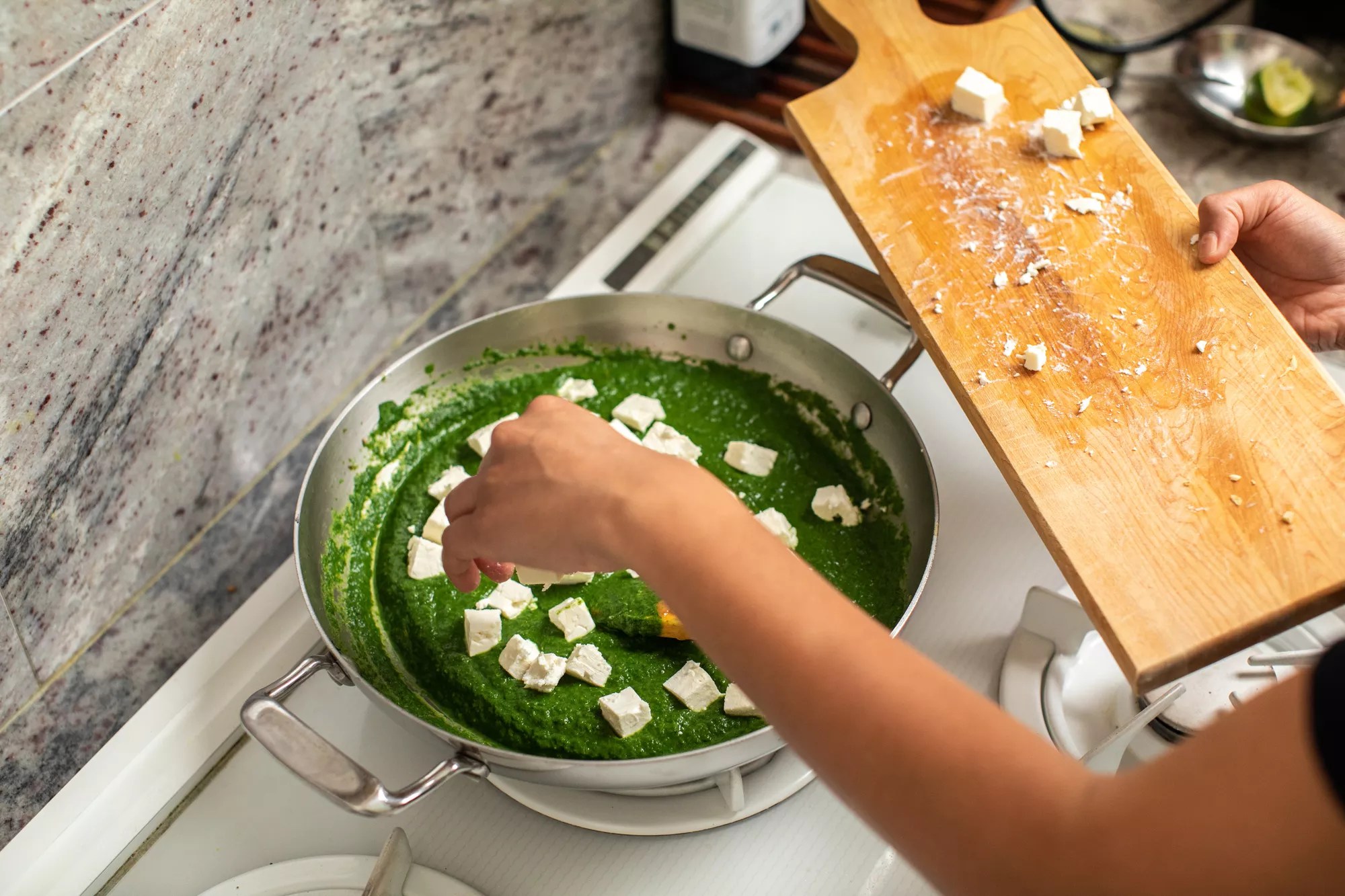
Priya Krishna cooks a version of saag paneer made with feta cheese, a recipe from Indian-ish.
Kathy Tran
Priya Krishna, a Dallas-raised writer who lives in New York City, had an upbringing far different from my own. Her mother, Ritu Krishna, a software company executive, raised her two daughters eating home-cooked meals that straddle the line between popular American staples and the home-cooked food Ritu grew up eating in India.
Now, those recipes are immortalized in a new cookbook: Indian-ish: Recipes and Antics from a Modern American Family. Its goal is to teach American cooks that Indian cuisine shouldn’t just be relegated to the Indian restaurants and takeout spots we love. It is something we can and should cook at home, not just to feed ourselves, but to learn about how other people feed their families.
“We worked really, really hard to make sure that these recipes were super doable for people,” Priya says. And, using myself as an example, it’s safe to say that they are. It’s been said countless times before, but trust me on this: If I can cook these dishes, anyone can. And everyone should.
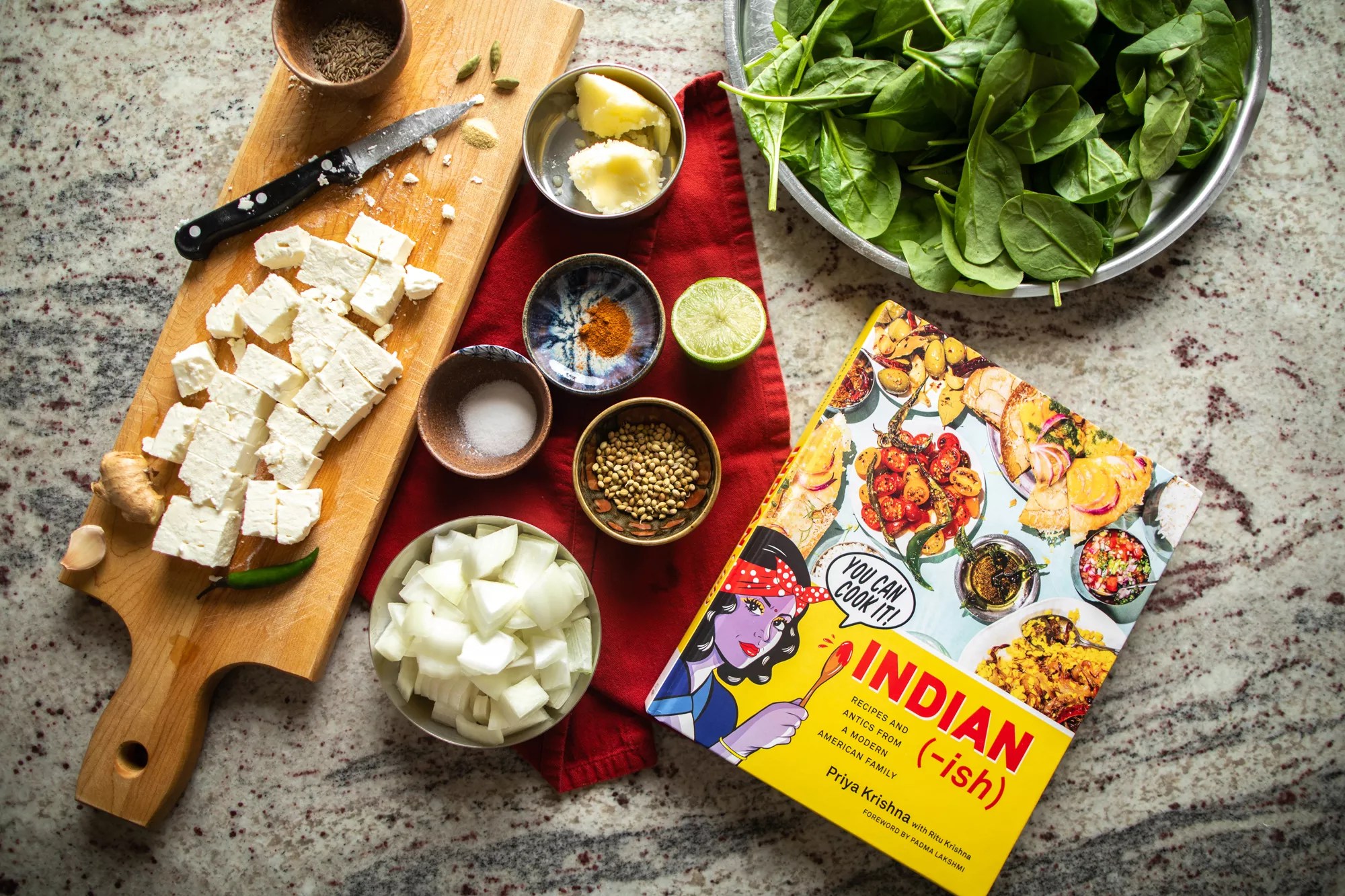
Indian-ish was published by Houghton Mifflin Harcourt in April.
Kathy Tran
Julia Child meets Madhur Jaffrey
Ritu Krishna was 20 years old when she moved to the United States from India with her family. She had studied psychology in India; her husband was a computer programmer. The Krishnas first moved to New England, where they lived about 12 years.
“When I first relocated to Massachusetts, Indian food was really nowhere to be found,” Ritu says. “We had to drive far, far away to get some basic spices.”
Growing up in India, Krishna didn’t learn much about how to cook.
“I didn’t cook much because my mother was too afraid that I would burn my hand or disfigure myself,” she says with a laugh. She had learned how to make roti, but not much else.
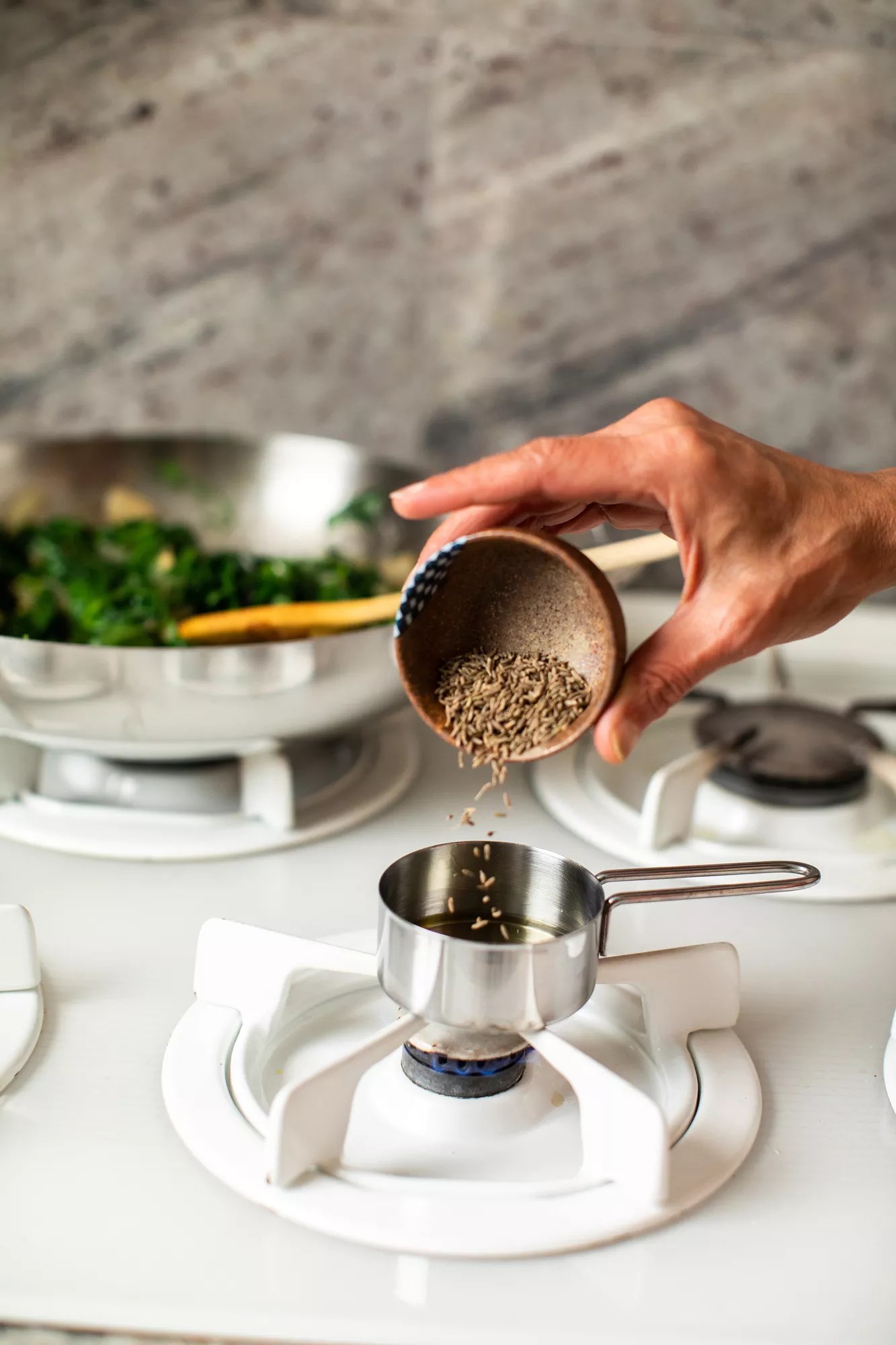
Ritu Krishna toasts spices in ghee.
Kathy Tran
“I had never put a meal together,” Ritu says.
But she brought a few Indian cookbooks with her to the U.S., like Madhur Jaffrey’s Taste of India, and once she got here, she started watching cooking shows like Julia Child’s.
“I just made whatever I could that was some combination of learning from Julia Child and the cookbooks that I had,” Ritu says.
By the time the Krishnas moved to Dallas in the early ’90s, immigrants had brought many of their native cuisines to DFW, and finding ingredients not always found in American grocery stores became easier.
“There isn’t anything that you cannot get,” Ritu says. “There’s really no reason to go to India to get anything. And it’s good and it’s fresh and it’s plentiful, and there are lots of options.”
As Priya grew up in Dallas, Ritu cooked meals at home every weeknight and on Sundays, feeding her family Indian-American hybrid dishes like roti pizza and dahi toast, a pseudo-grilled cheese made with spiced yogurt instead of stretchy American cheese.
“This cookbook is really a love letter from Priya to her mother.” – Padma Lakshmi
“My mom very much had a rule about eating at home. Monday through Thursday and Sunday were non-negotiable,” Priya says. “We had to eat at home and had to eat as a family.”
Eventually, Priya went to college at Dartmouth, where she double-majored in government and French and started to write for the student newspaper. She wanted to write about restaurants but realized most students weren’t eating off-campus, so she launched a column about how to make the best of dining hall meals. This led to Priya’s first book: Ultimate Dining Hall Hacks: Create Extraordinary Dishes from the Ordinary Ingredients in Your College Meal Plan. Rather than exploring the intricacies of cooking a particular cuisine, she set out to create a sort of meal-hack guidebook, proving to college students that creating healthy, satisfying meals wasn’t impossible.
With her latest cookbook, she’s in familiar territory: teaching novice cooks that building fresh, healthy, interesting Indian meals isn’t impossible. In fact, it’s surprisingly easy – and fun.
“My immediate thought when I was writing this book is that I hope other people of color my age sort of feel seen by the book,” Priya says. “There’s this inherent tension that exists in first-generation and second-generation immigrants. You are growing up this product of American culture, but you don’t feel like you fully fit in to either of those worlds. You’re too American to be Indian, and too Indian to be American.”

Kathy Tran
After college, Priya was working at the now-defunct food magazine Lucky Peach when the publication put together a cookbook called Lucky Peach Presents Power Vegetables. The recipes Priya contributed largely came from the recipes Ritu had been developing over years of living in the U.S. and feeding a family while working her way up the corporate ladder to eventually run software development teams. Her Lucky Peach coworkers were enamored of Ritu’s recipes and encouraged Priya to turn them into their own cookbook teaching American cooks how to make Indian dishes at home.
“I haven’t seen a book out there that, one, tells a really modern story about a modern family in America in 2019 – in this political era – and also one that sort of makes Indian flavors accessible to people, especially to young people,” Priya says.
Her life’s work has been about making good food more accessible. As a freelance writer for The New York Times and Bon Appetit, she loves to explore the origins of the food Americans love to eat. She’s delved into the history of everything from kolaches to Dunkin Donuts to the Italian-American kitsch-fest Buca di Beppo, often sharing how those dishes and restaurants affected her own upbringing as a first-generation Indian-American. For this cookbook, her investigative journalism focused inward on her own upbringing.
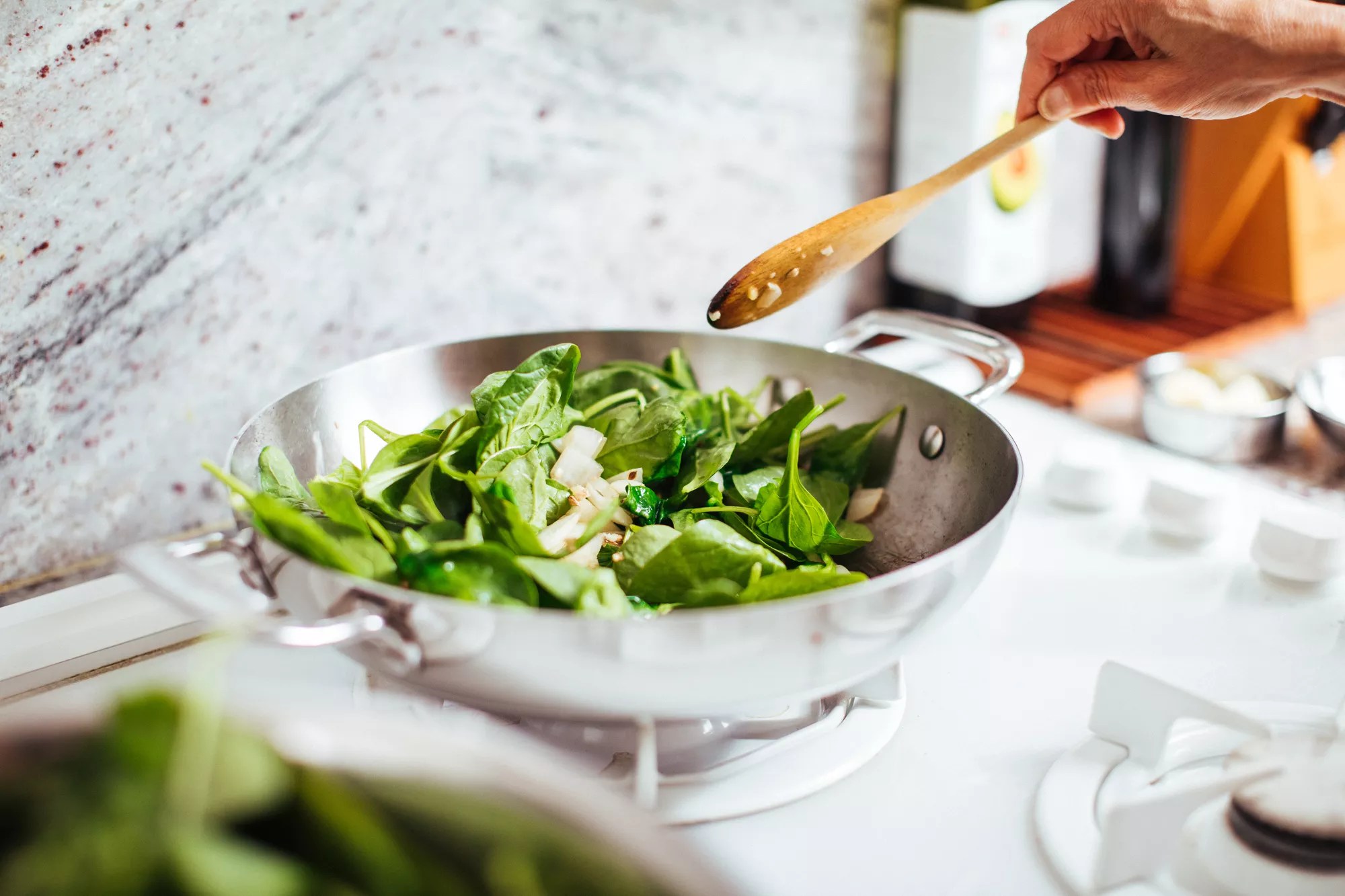
Krishna’s saag feta uses fresh spinach and feta cheese in place of paneer.
Kathy Tran
“It’s a very vulnerable thing, putting the food that you grew up with out there. You can’t help but take it personally if people don’t like it,” Priya says.
So far, Indian-ish seems to have hit the cultural and culinary zeitgeist. The New York Times cited it as one of the best cookbooks of spring 2019, noting that “it is a joy to cook from, and just as much fun to read.” Food and Wine says the book “marks a moment of change for a cuisine once silo’d in the West as Mughlai creamy butter chicken and takeout ‘curry.'” Priya has made several recipes from the book into videos for Bon Appetit; her dahi toast video has been watched on YouTube 765,000 times. Munchies, the food and drink arm of Vice, posted a video last week of Priya making potato flatbread that’s already been viewed nearly 200,000 times.
The book is built with the beginner in mind. There are lessons on how to cook rice, boil potatoes, cook with whole spices and seeds. You’ll learn how to make homemade yogurt and what American condiments work great in Indian dishes. There are recipes for mother sauces and matar paneer and chaat masala. You’ll learn how much Priya’s father loves mixing ketchup with cilantro chutney to create a hybrid Indian-American “super sauce.”
“I want Indian food to be seen as everyday food. I want it to be part of the mainstream home cooking conversation, and I don’t feel that it is now.” – Priya Krishna
Padma Lakshmi, the Indian-American host of Top Chef, wrote the book’s foreword, where she gushes about the book’s ability to make Indian cooking more accessible.
“This cuisine is indeed authentic, and while it may not be traditional Indian food or what we think of as American food, most of the over two million Indian-Americans in the United States would argue that it’s actually both,” Lakshmi writes. “What’s more important, dear reader, is that it is a great starter book for anyone who has ever wondered how to make basic Indian food in an American kitchen.”
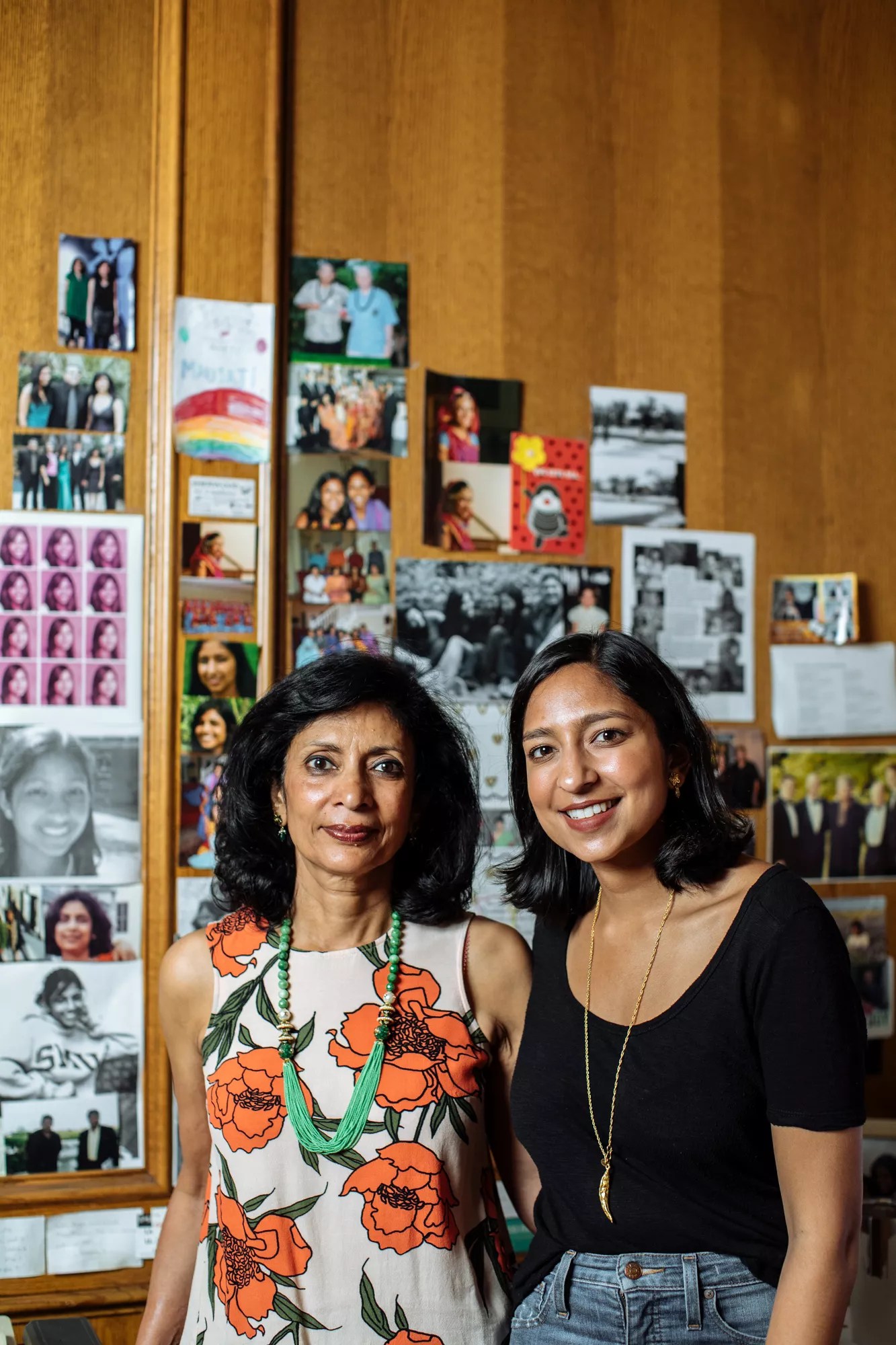
Ritu (left) and Priya Krishna at home in Farmers Branch
Kathy Tran
Lakshmi also points out the one thing that sets this book apart from every other book attempting to teach Indian cooking to American audiences: the source of these recipes, recipes that Ritu developed out of necessity and fed her family with over decades. This book is not a list of trendy health food or “ethnic” recipes; it’s a history of the Krishna family and the meals Ritu cooked while raising two daughters 7,000 miles away from her home country.
“This cookbook is really a love letter from Priya to her mother,” Lakshmi writes, “and when you peruse the pages, you see why.”
How many of the cookbooks in our kitchen, dog-eared with food-splattered pages, are also quiet homages to authors’ mothers, women who create warm, inviting homes and raise and feed children while also building their own impressive careers?
That, in essence, is what Indian-ish is: a living monument to Ritu Krishna’s love of her children, poetic praise of her Superwoman-like ability to raise a family while navigating her way to the top of her career field, a juggling act men don’t often need to navigate. What looks like lists of ingredients and cooking instructions is really a love letter to all the ways, food included, that Ritu went above and beyond for everyone in her life. It’s the same thing many of us want to do for our own loved ones, even through something seemingly as small and insignificant as tonight’s dinner.
But, as Indian-ish reminds us, those weeknight pantry dinners and Sunday suppers have never been insignificant. They are never just about sustenance. They’re about love and home and history and lineage. They’re about honoring the past while rocketing into an uncertain future, breakfast-first. They’re about a love of food, but more about our love for the people we cook it for. They’re about connecting with each other over the shared experience of eating.
Indian-ish is a beautiful lesson that anyone – even a kitchen novice – can learn to cook another culture’s cuisine, resulting in not just a hearty, comforting meal, but a small mental bridge between us and the other cultures that surround us.
“I want Indian food to be seen as everyday food,” Priya says. “I want it to be part of the mainstream home cooking conversation, and I don’t feel that it is now.”